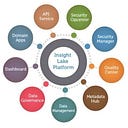GenAI Use Cases in Property and Casualty Insurance Underwriting Process
The insurance industry is undergoing a significant transformation with the adoption of Generative AI (GenAI) technologies. In property and casualty (P&C) insurance, the underwriting process is a critical component that involves evaluating risks, determining pricing, and making coverage decisions. Integrating GenAI into this process can enhance efficiency, accuracy, and customer satisfaction. This blog explores various use cases of GenAI in the P&C insurance underwriting process, providing detailed examples of how these technologies can be implemented.
Understanding the Underwriting Process
Underwriting in P&C insurance involves assessing the risk associated with insuring a property (like a home or a commercial building) or liability (such as auto insurance). The key steps in the underwriting process include:
- Data Collection: Gathering information about the property or liability to be insured.
- Risk Assessment: Evaluating the risk based on the collected data.
- Pricing: Determining the premium based on the risk assessment.
- Decision Making: Deciding whether to accept or reject the insurance application.
- Policy Issuance: Issuing the policy if the application is accepted.
GenAI Use Cases in Underwriting
1. Automated Data Collection and Processing
Use Case
GenAI can automate the collection and processing of data from various sources, including application forms, property images, previous claims, and external databases. This reduces the manual effort required and ensures more accurate and comprehensive data for underwriting.
Example
A property insurance company uses GenAI to extract and process information from property photographs submitted by applicants. The AI model can identify details such as the condition of the roof, presence of safety features (e.g., smoke detectors), and signs of previous damage. This information is then used to enhance the accuracy of the risk assessment.
2. Risk Prediction and Assessment
Use Case
GenAI models can analyze historical data and identify patterns that indicate risk levels. These models can provide underwriters with insights and predictions about the likelihood of claims, helping them make more informed decisions.
Example
An auto insurance company employs a GenAI model to predict the risk of accidents based on factors such as the applicant’s driving history, vehicle type, and geographic location. The AI model uses historical accident data to identify high-risk applicants and recommend appropriate premium adjustments.
3. Pricing Optimization
Use Case
GenAI can optimize pricing strategies by analyzing various factors that influence risk and costs. This ensures that premiums are competitive and accurately reflect the risk associated with each policy.
Example
A commercial property insurance provider uses GenAI to analyze data on building materials, occupancy types, and historical claim frequencies. The AI model helps the insurer set premiums that are competitive while covering potential risks adequately.
4. Fraud Detection
Use Case
GenAI can identify patterns and anomalies in data that may indicate fraudulent activity. By detecting potential fraud early in the underwriting process, insurers can reduce their exposure to fraudulent claims.
Example
A home insurance company uses GenAI to analyze claims data for patterns that suggest fraud, such as frequent claims from the same address or inconsistent information across different documents. The AI model flags suspicious applications for further review by human underwriters.
5. Customer Experience Enhancement
Use Case
GenAI can streamline the underwriting process, making it faster and more efficient, which enhances the overall customer experience. Automated chatbots and virtual assistants can guide applicants through the process, answer questions, and provide real-time updates.
Example
An insurance company implements a GenAI-powered chatbot on its website to assist customers with the application process. The chatbot answers questions about coverage options, helps fill out application forms, and provides status updates on underwriting decisions.
6. Document Generation and Management
Use Case
GenAI can automate the generation of policy documents, ensuring accuracy and consistency. It can also manage document workflows, reducing the administrative burden on underwriters.
Example
A liability insurance provider uses GenAI to generate policy documents based on the underwriting decisions. The AI system ensures that all required information is included and formatted correctly, reducing the time underwriters spend on administrative tasks.
Implementation of GenAI in Underwriting
Step 1: Data Integration
Integrate various data sources, including internal databases, external data providers, and customer-submitted information, into a unified system. This provides a comprehensive dataset for GenAI models to analyze.
Step 2: Model Development
Develop GenAI models tailored to specific underwriting tasks. This may involve using machine learning algorithms to predict risk, detect fraud, or optimize pricing.
Step 3: Model Training and Validation
Train GenAI models on historical data and validate their performance using test datasets. This ensures that the models provide accurate and reliable predictions.
Step 4: Deployment
Deploy GenAI models into the underwriting workflow. This may involve integrating the models with existing software systems and automating certain underwriting tasks.
Step 5: Monitoring and Refinement
Continuously monitor the performance of GenAI models and refine them based on new data and feedback from underwriters. This ensures that the models remain accurate and effective over time.
Conclusion
Integrating GenAI into the P&C insurance underwriting process offers numerous benefits, including increased efficiency, enhanced accuracy, and improved customer experience. By automating data collection, predicting risks, optimizing pricing, detecting fraud, and streamlining document management, GenAI can transform the underwriting process and help insurers stay competitive in a rapidly evolving market.
Implementing GenAI requires careful planning, from data integration and model development to deployment and ongoing monitoring. However, the potential benefits make it a worthwhile investment for insurers looking to innovate and improve their underwriting processes.
About — The GenAI POD — GenAI Experts
GenAIPOD is a specialized consulting team of VerticalServe, helping clients with GenAI Architecture, Implementations etc.
VerticalServe Inc — Niche Cloud, Data & AI/ML Premier Consulting Company, Partnered with Google Cloud, Confluent, AWS, Azure…50+ Customers and many success stories..
Website: http://www.VerticalServe.com
Contact: contact@verticalserve.com
